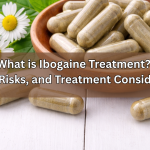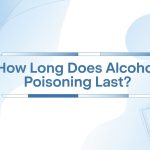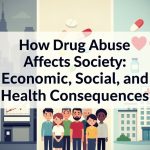In This Blog
- 7-OH kratom effects show opioid-like potency, up to 13x stronger than morphine (FDA, 2025).
- FDA and state health agencies warn against concentrated kratom use (DSHS, 2025).
- Side effects include seizures, respiratory depression, and addiction (NIH, 2024).
- No FDA-approved medical use for kratom or 7-OH (FDA, 2025).
Palm Coast Treatment Solutions provides professional kratom addiction treatment programs.
Kratom is a bit of a trend in the U.S. and is being sold like a standard analgesic to assist with opioid withdrawal. All the stuff in it does not do the same thing, however. The principal active ingredient, 7-hydroxymitragynine (7-OH), is a highly potent opioid receptor binder that can severely misbehave with your health. You can find these gummies, powders, and drinks with a high 7-OH in smoke shops and online, yet none are FDA approved, and thus, you can likely avoid their use. The state health folks in Texas reports that cases associated with this drug are increasing nearly twice, in 2024-25, particularly with 7-OH. Although these products are not supported by any official authorization and are dangerous, those gummies, concentrated forms, powders, and beverages are sold both in stores and online.
This discussion aims to clarify the pharmacodynamics of 7-OH in kratom, define the adverse effect profile of this drug, and suggest rehabilitative interventions to be used with individuals developing dependence on the substance.
Brief Overview of Kratom and 7-OH
Kratom is a tropical shrub that is indigenous to Southeast Asia. Local uses: Traditional use among local people was to chew its leaves to attain a light euphoric feeling, or analgesia. Methilgynine and 7-OH can be found in the foliage, where they attach mainly to opioid receptors in the central nervous system.
Only trace levels of 7-OH are produced by natural leaves, usually less than 2 percent of the total alkaloid content. Modern manufacturers can even manage to create synthetic or semi-7-OH with a concentration of up to 98 percent, leading to products of much higher strength.
Natural Kratom vs Concentrated 7-OH
Product Type | 7-OH Content | Risk Level |
Natural Kratom Leaves | <2% | Mild–Moderate |
Synthetic 7-OH Extract | 50–98% | Severe, addictive |
(Source: FDA, 2025; DSHS, 2025)
100% Confidential Support is Available 24/7
No matter what you’re going through, you’re not alone. Our dedicated team is here to provide a safe, judgment-free space where you can talk openly and honestly. Whether you need emotional support, resources, or just someone to listen.
We’re here for you—completely confidential and always respectful of your privacy. Call us today!
Understanding 7-OH Kratom and Its Risks
The proportion of 7-OH in a kratom preparation dictates the pharmacological profile of a kratom preparation. The more content, the higher the physiological effects. The sellers often insist that their products are safer than traditional kratom, but empirical evidence, in accordance with the recommendations of the FDA, designates 7-OH-containing products as novel opioids awaiting further regulatory assessments.
Contact Palm Coast Treatment Solutions
Battling with Drug and Alcohol Addition? Remember, you are not alone and we are here to help you!
Understanding 7-OH: The Potent Alkaloid in Kratom
In the psychoactivity range of kratom, 7-hydroxymitragynine has a greater bond with opioid receptors compared to mitragynine (National Institutes of Health, 2024). This increased receptor affinity is the basis of the morphine-like euphoric and analgesic properties of 7-OH.
Taken orally at high doses, 7-OH may assume a similar role to conventional opioids, leading to dependence and withdrawal in case of discontinuation.
Overcome Addiction with Palm Coast Treatment Solutions.
Book an appointment.
How 7-OH Differs from Mitragynine
Mitragynine is the most common alkaloid in kratom, but 7-OH is significantly more active and is naturally limited. Semi-synthetic products synthetically increase the level of 7-OH, which enhances pharmacological response.
Mitragynine vs 7-OH
Factor | Mitragynine | 7-OH |
Abundance | 60%+ of kratom alkaloids | <2% naturally |
Potency | Mild | Up to 13x stronger than morphine |
Risks | Lower | High addiction, overdose |
(Source: FDA, 2025; NIDA, 2024)
7-OH vs. Kratom: Potency and Risks
The pharmacological effects of the traditional use of kratom in Southeast Asia is relatively mild.
By contrast, much stronger preparations are much more hazardous:
- Natural Kratom: It can create either mild stimulation or analgesia.
- 7-OH Extracts: Causes sedation, respiratory depression, and opioid-like withdrawal.
In 2025, the FDA also warned about both kratom and 7-OH thus confirming the fact that neither product has been approved to be used medically.
It is the concentrated formulations that are strong enough to be considered synthetic drugs instead of herbal supplements.
Overcome Addiction with Palm Coast Treatment Solutions.
Book an appointment.
How Kratom Affects the Brain and Body
The action of kratom is caused by its action on the opioid receptors of the brain (NIDA, 2024):
- Analgesia (pain relief)
- Euphoria
- Low-dose social facilitation.
- High doses of sedatives cause respiratory depression syndrome.
The chronic use of it can result in pharmacodynamic changes such as tolerance, dependence, and withdrawal, similar to those of opioid use disorder (CDC, 2024).

100% Confidential Support is Available 24/7
No matter what you’re going through, you’re not alone. Our dedicated team is here to provide a safe, judgment-free space where you can talk openly and honestly. Whether you need emotional support, resources, or just someone to listen.
We’re here for you—completely confidential and always respectful of your privacy. Call us today!
What is 7OH Used For?
Researchers believe that 7-hydroxy-kratom (7-OH) may serve as a therapeutic agent, rather than one worsened by analgesia or mood boosting, or to replace traditional opioid drugs. Others also indicate its possible ability to reduce the effects of opioid withdrawal, but this argument cannot be verified through objective scientific data (FDA, 2025).
The U.S. Food and Drug Administration specifically warns that products with kratom or 7-OH do not have therapeutic support. Higher concentration preparations introduce a significantly higher risk of addiction, seizure, and organ toxicity.
Overcome Addiction with Palm Coast Treatment Solutions.
Book an appointment.
Risks and Side Effects of Kratom and 7-OH
Severe adverse effects in patients taking concentrated 7-OH formulations have been reported in clinical case series.
Symptoms that are most commonly reported are:
- Nausea, vomiting, and diaphoresis.
- Agitation, confusion
- Tachycardia, hypertension.
- Lung complications like pneumonia.
- Seizures.
Short-Term vs Long-Term Risks
Short-Term Risks | Long-Term Risks |
Nausea, sweating, agitation | Addiction, withdrawal, liver damage |
Sleepiness, dizziness | Mental health decline, organ toxicity |
Trouble breathing | Risk of overdose, death |
(Source: NIH, 2024; FDA, 2025)
Triggering Stat or Fact
Statistically, 7-OH-kratom has been shown to have an estimated potency of 13-fold in comparison to morphine (U.S. Food and Drug Administration, 2025).
The Link Between Kratom and Addiction
Kratom is also addictive despite being sold as a natural remedy. This risk is highly enhanced by the opioid-like properties of 7-OH. Insomnia, irritability, fatigue, and cravings are frequently reported by those withdrawing (National Institute on Drug Abuse, 2024).
Kratom Addiction Treatment Programs
Evidence-based intervention framework and medical supervision are crucial to recovery from kratom misuse, or the process itself can be slowed down.
The new Palm Coast Treatment Solutions is an example of such an approach, which provides:
- A professionally guided and orderly withdrawal management strategy.
- Cognitive-behavioral therapy, family counseling, and relapse-prevention.
- Pharmacologic therapy – such as naloxone in acute cases- to reduce the symptoms of withdrawal.
Relapse prevention therapy, group counseling, and outpatient follow-ups (NIH, 2024).
Palm Coast Treatment Solutions is a place where you can start the recovery process.

The way Palm Coast Treatment Solutions can help.
At Palm Coast Treatment Solutions, we enable individuals to get rid of kratom and 7-OH addiction through professional treatment and caring service. Our approach includes:
- Patient-centered individual care plans.
- Complete treatment including detox, relapse prevention and follow-up.
- A conducive healing environment that is safe and conducive.
- The goal of the program is to make people live healthier and addiction-free lives.
You should not wait to help yourself or your loved ones. Call Palm Coast Treatment Solutions and go on a path of recovery at (386) 284-4151.
FAQ’s About Kratom
What does the drug kratom do?
Kratom is sold as an opioid pain reliever, a stimulant, or an opioid withdrawal treatment but is not FDA-approved. Concentrated forms such as 7-OH may be highly unhealthy.
Is kratom an opioid?
Kratom is not a classical opioid, and the alkaloids of kratom, in particular, 7-OH, occupy opioid receptors in the central nervous system. This will result in addiction and withdrawal symptoms.
Why is kratom illegal?
Some U.S. states have prohibited kratom, and the federal government has conducted safety tests. The 7-OH products of high concentration are contraindicated because they may cause addiction, liver damage, seizures, and fatalities, as the FDA has said.
What does Kratom mean on the streets?
Kratom has street names: ketum, kakuam, thang, and biak-biak. To disguise its identity, vendors usually market it as a natural supplement, energizer, or powder.
Which one is stronger, 7OH and morphine?
Research indicates that 7-OH might be thirteen times stronger than morphine. Its extreme level of strength is also a great danger of overdosing and addiction.
Does 7OH show on a drug test?
Normal drug screens do not include kratom and 7-OH, though they may be detected by special toxicological tests, which might be of interest in some legal or work-related screening cases.
Why is kratom illegal in the USA?
Both the FDA and DEA refer to a growing list of adverse health cases with kratom and 7-OH. Although federal classification does not consider it an illicit drug, it is illegal in most states to conserve the health of the people.
Conclusion
- Natural plants do not work as well as 7-OH.
- It is not recommended by the FDA because of serious health risks.
- It is addictive however, recovery assistance is available.






















